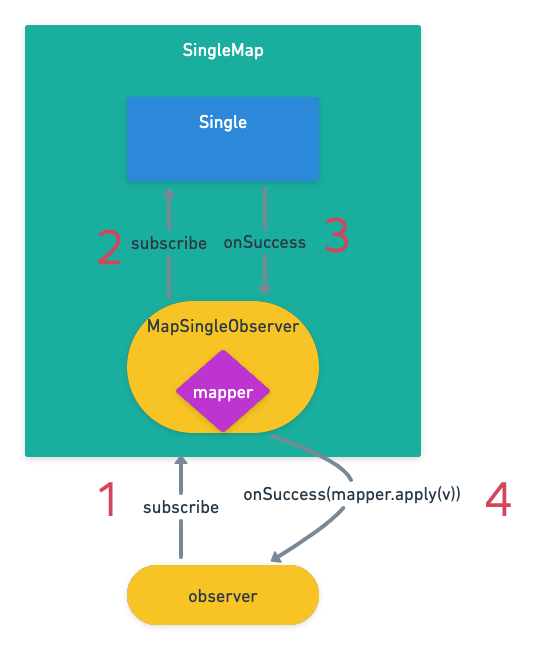Demystify RxJava (1)
Get to know how RxJava works
Let’s see what makes RxJava tick.
RxJava is complex, so I will have to (overly) simplify things at places. All of this is just trying to help you to get a better picture of how RxJava is implemented.
Let’s go.
Let’s start with the Single, it’s just an interface with one method:
public interface Single<T> {
void subscribe(SingleObserver<T> observer);
}So a Single is just a thing that can be subscribed.
Next, let’s look at what is this SingleObserver.
public interface SingleObserver<T> {
void onSubscribe(Disposable d);
void onSuccess(T t);
void onError(Throwable e);
}Looks like it’s just a callback with 3 methods. And they are pretty much self-explanatory. Easy peasy.
Time to see some implementations of these interfaces. The simplest case is this:
Single.just(1)
.subscribe(object : SingleObserver<Int> {
override fun onSubscribe(d: Disposable) {
}
override fun onSuccess(t: Int) {
}
override fun onError(e: Throwable) {
}
})Single.just(1) will create a SingleJust, which implements Single.
public final class SingleJust<T> extends Single<T> {
final T value;
public SingleJust(T value) {
this.value = value;
}
@Override
protected void subscribeActual(SingleObserver<? super T> observer) {
observer.onSubscribe(Disposables.disposed());
observer.onSuccess(value);
}
}When SingleJust is subscribed, it does 2 things:
- Call
observer.onSubscribe()with a Disposable which is already disposed. - Call
observer.onSuccess()with the value.
This is not hard to understand, since there is only one hardcoded value, there can not be any error, and there is nothing to be disposed in such simple case.
Now let’s take a small step further to look at the Single.map() operator.
Single.just(1).map { it -> it * 2 }You might have already guessed, map() will create a new Single instance, of type SingleMap.
public final class SingleMap<T, R> extends Single<R> {
final SingleSource<? extends T> source;
final Function<? super T, ? extends R> mapper;
public SingleMap(SingleSource<? extends T> source, Function<? super T, ? extends R> mapper) {
this.source = source;
this.mapper = mapper;
}
@Override
protected void subscribeActual(final SingleObserver<? super R> t) {
source.subscribe(new MapSingleObserver<T, R>(t, mapper));
}
static final class MapSingleObserver<T, R> implements SingleObserver<T> {
final SingleObserver<? super R> t;
final Function<? super T, ? extends R> mapper;
MapSingleObserver(SingleObserver<? super R> t, Function<? super T, ? extends R> mapper) {
this.t = t;
this.mapper = mapper;
}
@Override
public void onSubscribe(Disposable d) {
t.onSubscribe(d);
}
@Override
public void onSuccess(T value) {
t.onSuccess(mapper.apply(value));
}
@Override
public void onError(Throwable e) {
t.onError(e);
}
}
}SingleMap is like a wrapper, to wrap around another Single (source). And when subscribed, it just
subscribe the source Single with its internal MapInternalObserver.

That’s it for now. Next article we will talk about how dispose works. Stay tuned!

Twitter
Google+
Facebook
Reddit
LinkedIn
StumbleUpon
Email